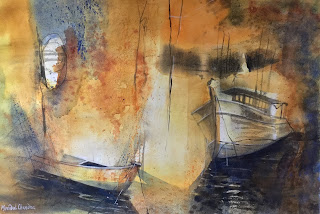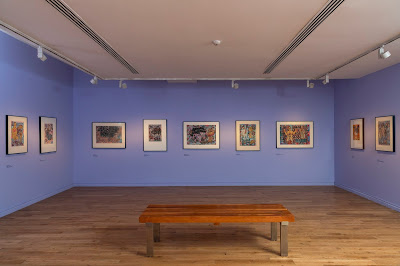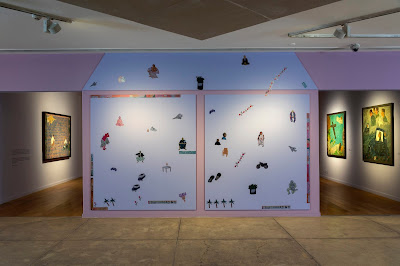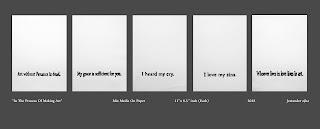A Visual Travelogue
“Nature is so powerful, so strong. Capturing its essence is not easy – your work becomes a dance with light and the weather. It takes you to a place within yourself.” Annie Leibovitz
She explains that this exhibition is a celebratory expression of experiencing the joys of nature and marvelling at its beauty. The watercolour paintings capture the atmosphere and the soft romantic moods of nature. "Ochre is the first colour on my palette; Iris the vehicle in the eye for seeing the world.", she says.
"My ode in this series is in celebration of well-being. Much like the practice of yoga, or meditation."
Mridul elaborates on how she gravitated towards watercolours,"Transition from oil /acrylic to watercolours came out of sheer curiosity. As time elapsed, I realised how immersive and captivating the medium of watercolours is. Employing a minimal palette, letting the colours flow, creating accidental splurges, enabling the painting to evolve with tonal gradations. Along with light and shadow playing a key role in creating the mood and atmosphere. By attempting small and medium sized works, the show in parts is like a travelogue."
As a result, a deeply meditative world emerges in her landscapes.
About Mridul Chandra:
Mridul has studied from ‘Sir JJ school of Art ‘Mumbai. Hailing from Kolkata, she now lives in Bangalore. Having worked with architects for the Asian games of 1982 to dabbling in graphics, she is now full time in painting. Spanning two decades of a creative journey, she has held solo shows in ‘Jehangir Art Galley’ Mumbai. Duo show in ‘Habitat Art Gallery’ Delhi. Besides several Gallery group shows in Bangalore. Participated in an all-Women’s’ Artist Camp in Gulbarga organised by Karnataka Lalit Kala Academy. Her works are with collectors in India and abroad.
At present besides studio work, she conducts water colour short sessions for the public to generate interest and well-being.
Inauguration - Saturday 19th October 2019, inauguration 3pm-8.30 pm.
All works can be viewed on https://www.mridulchandra.com/
Ochre and the Iris, solo show by Mridul Chandra, from 19th - 10th Nov 2019 at MKF Museum of Art, 55/1 Isha Villa, Lavelle Road, Bengaluru 560001
Timing 11-7 pm.( (Monday closed.) ph: +91 9845736550 +91 7373887557
All images courtesy the artist
Sponsored post
Please share this article using the social media widgets at the bottom and do subscribe to receive regular updates from Art Scene India.
For interviews, profiles, sponsored posts and to contribute articles, contact artsceneinfo@gmail.com
Also read,
Sponsored post
For interviews, profiles, sponsored posts and to contribute articles, contact artsceneinfo@gmail.com
Also read,
- Art News: apexart NYC Open Call 2020-21
- Art News: Of Life and Landscape
- Timeless Narratives by Veteran Artists
- Linear Perspective by Shirley Mathew
- The Melancholy State of Happiness
- Interview: Kiran Nadar on #chalomuseum
- ART COLLECTION: Chitrakala Parishath, Bangalore
- ART COLLECTION: Jaganmohan Palace, Mysore
- ART COLLECTION: NGMA, Bangalore
- 5 Reasons a Good Catalogue Text is Essential for Your Art



















